Sometimes, you're scrolling through Instagram when an image takes your breath away. In this case, it was a photo of a sumptuous floral arrangement that looks like it might have been painted centuries ago. The flowers are so stunning, you can only wonder, are they real? Then, you find out some of them are made of sugar.
It’s the work of extraordinary floral artist Natasja Sadi. She reveals how she does it in her new book, A Sweet Floral Life: Romantic Arrangements for Fresh and Singular Flowers.
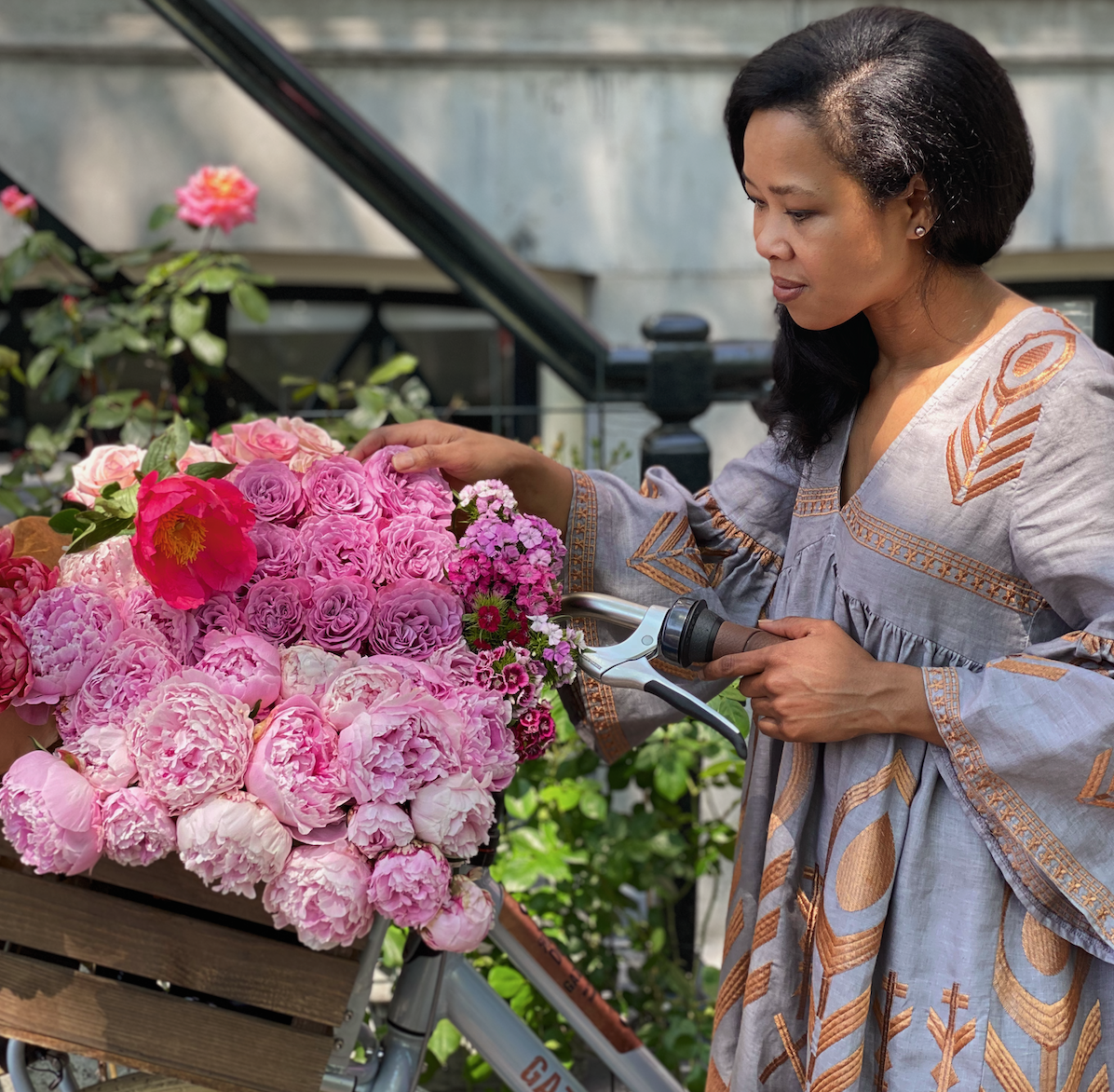
"When I arrange my flowers, I'm more of a 'more is more' person," says floral artist Natasja Sadi. Photo by Natasja Sadi.
The following has been edited for length and clarity
KCRW: Talk a little bit about how your background — being from Suriname and living in Amsterdam — has influenced your design life, and in particular, the way you look at flowers.
Natasja Sadi: Well, I think living in Amsterdam, and being so surrounded by flowers, it is something that initially I didn't really think about because it was always there. It wasn't something that was very expensive or that I had to work hard for. Also, flowers aren't something that I'm the only one having them at home. We all have them. The fields are everywhere, especially in the spring, when the tulips are blooming, or when it is the greenhouses. We are so used to having flowers. But it was actually when I was on Instagram. And I noticed that, of course, this doesn't count for the rest of the world, where I really thought, "Oh, this is special. This is not what everybody else has." And it was in that moment that I really started to look at what flowers meant for me and how it influenced me.
Take us down the road of how you created your style.
When I arrange my flowers, I'm more of a "more is more" person. So I just keep adding these layers and layers because there's so many flowers that I love. And then before I know it, it is this arrangement that is full of color, that is full of texture, and the abundant blooms, I always almost feel as if they're dancing.
At first, I was either showing the real flowers or was shown just sugar flowers. But afterwards, I thought, why don't I just combine them because I found myself in the middle of winter and I had these wonderful sugar peonies, and I thought why not incorporate them in my real flower arrangements? And that's actually what I did. And by adding them, because they have a slightly different texture and because of course you can also see that they're a bit out of season, they stand out even more in the arrangement and they give that wonderful painterly feel that I'm always looking for. And because we are so blessed with the beautiful Dutch light, it was very natural for me to capture them in that same tradition as the old days, as the paintings.
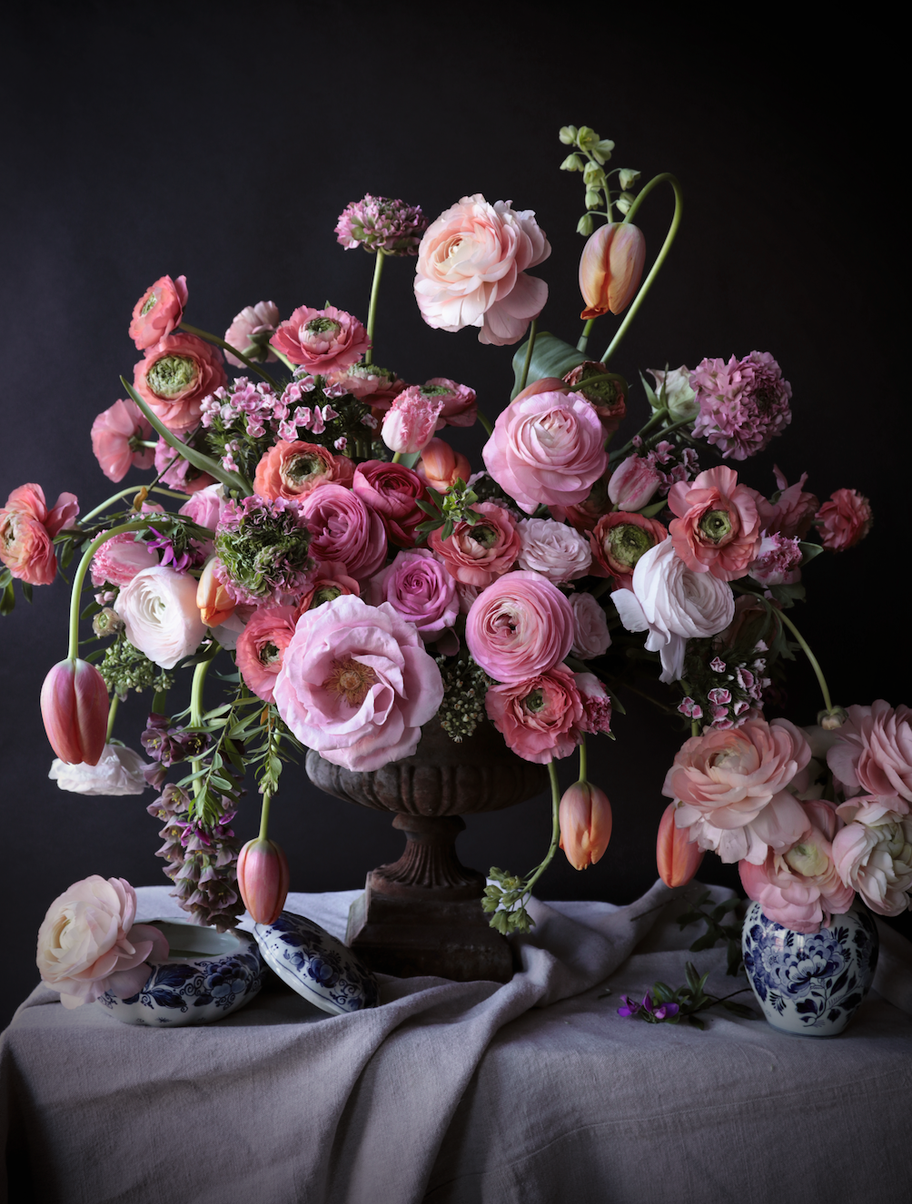
Full of color and texture, Sadi combines real flowers with those she makes from a sugar-based paste, giving them a painterly feel. Photo by Natasja Sadi.
How do you look at and consider nature when making your sugar arrangements?
Well, I don't have a garden. I do have a rooftop terrace and I plant quite a lot of flowers there. Every inch is covered with pots and plants. But I don't have a garden and you would think then that because you don't really have a garden that there's no real connection with nature. And I think that that is not true. I think that there are many people who do not have gardens who are just as interested and connected with nature as those who do.
By really diving deep into blooms and really investigating them and figuring out their DNA and what they're all about, not just what they look like, but also how they bloom, what their buds look like and how they represent themselves when they're full, open flower, and to then try and imitate that in sugar, I think it really connects you to something deeper. And I think that nature is a wonderful way to connect and tap into that very deep, wonderful source.
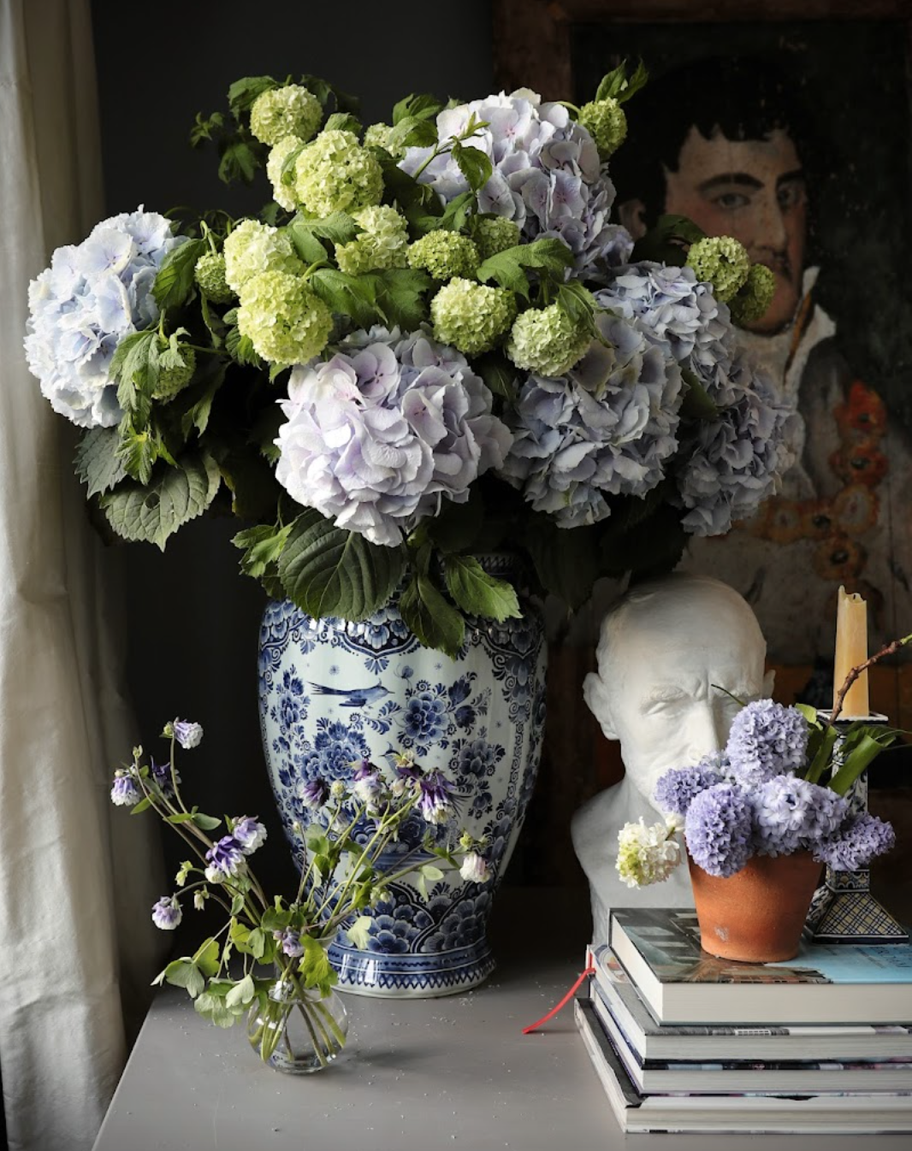
"Because we are so blessed with the beautiful Dutch light, well, it was very natural for me to capture them in that same tradition as the old days in the paintings," says Sadi, who photographs her arrangements. Photo by Natasja Sadi.
You talk about searching for “flower gold.” How do we do that?
First of all, we have to keep our hearts and our minds open to what is all around us. I'm not saying that you can just grab every bloom along the side of the street. But when we are more aware of everything that grows and what is for sale, and who grows the flowers, and the people behind it who take enormous risks, I think that that is something that is just absolutely worth knowing.
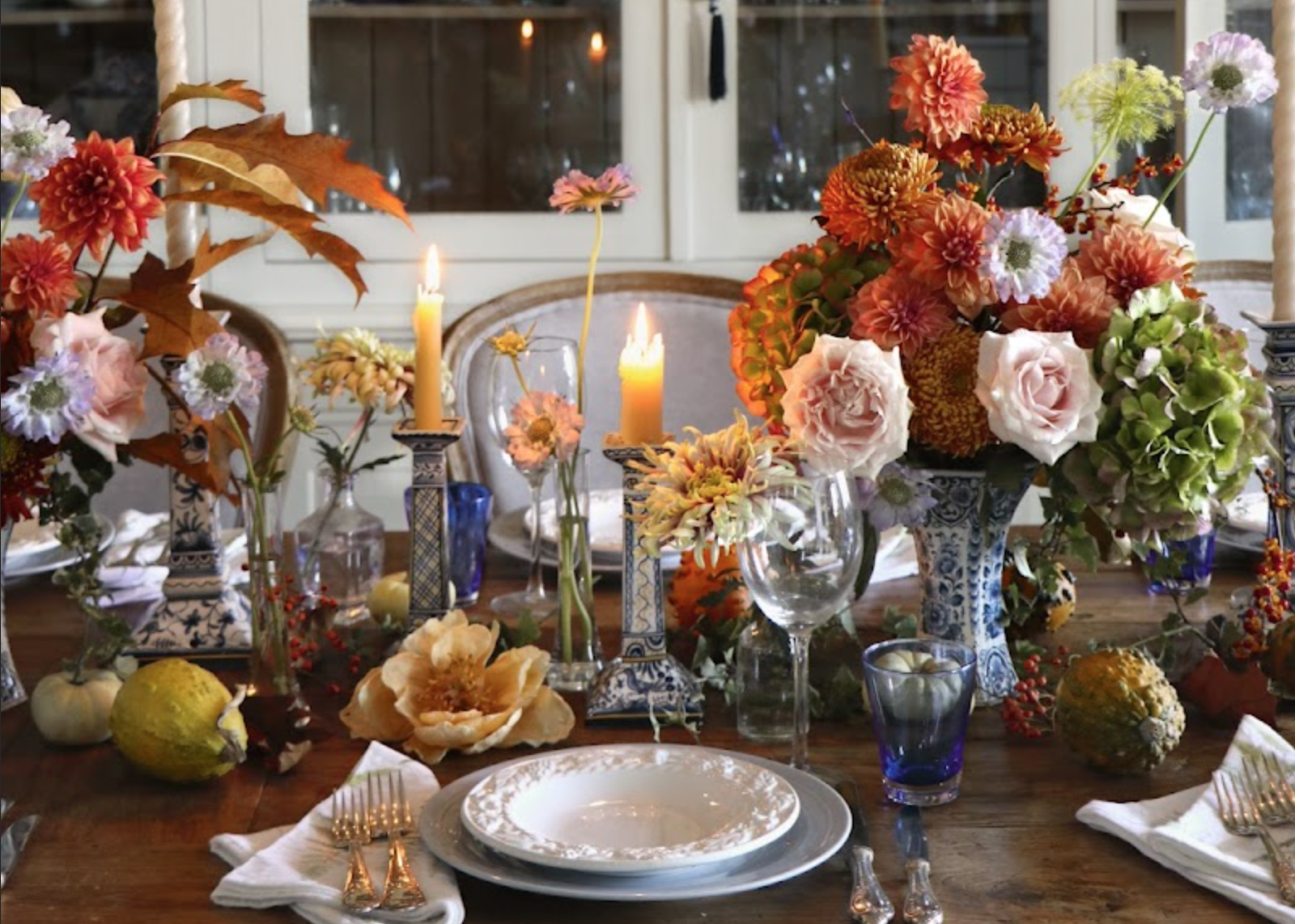
Fragile and time-consuming to make, Sadi's florals are edible but contain intricate wiring and endure longer than real bouquets. Photo by Natasja Sadi.
Going into actually making the sugar flowers, what is your medium?
My medium is powdered sugar, or icing sugar, and there's a little bit of hardening agent and a few other ingredients, which I share in the book. It turns into this paste, which almost feels like clay. Then you can roll it out, you can give it texture, you can model it to almost anything that you desire.
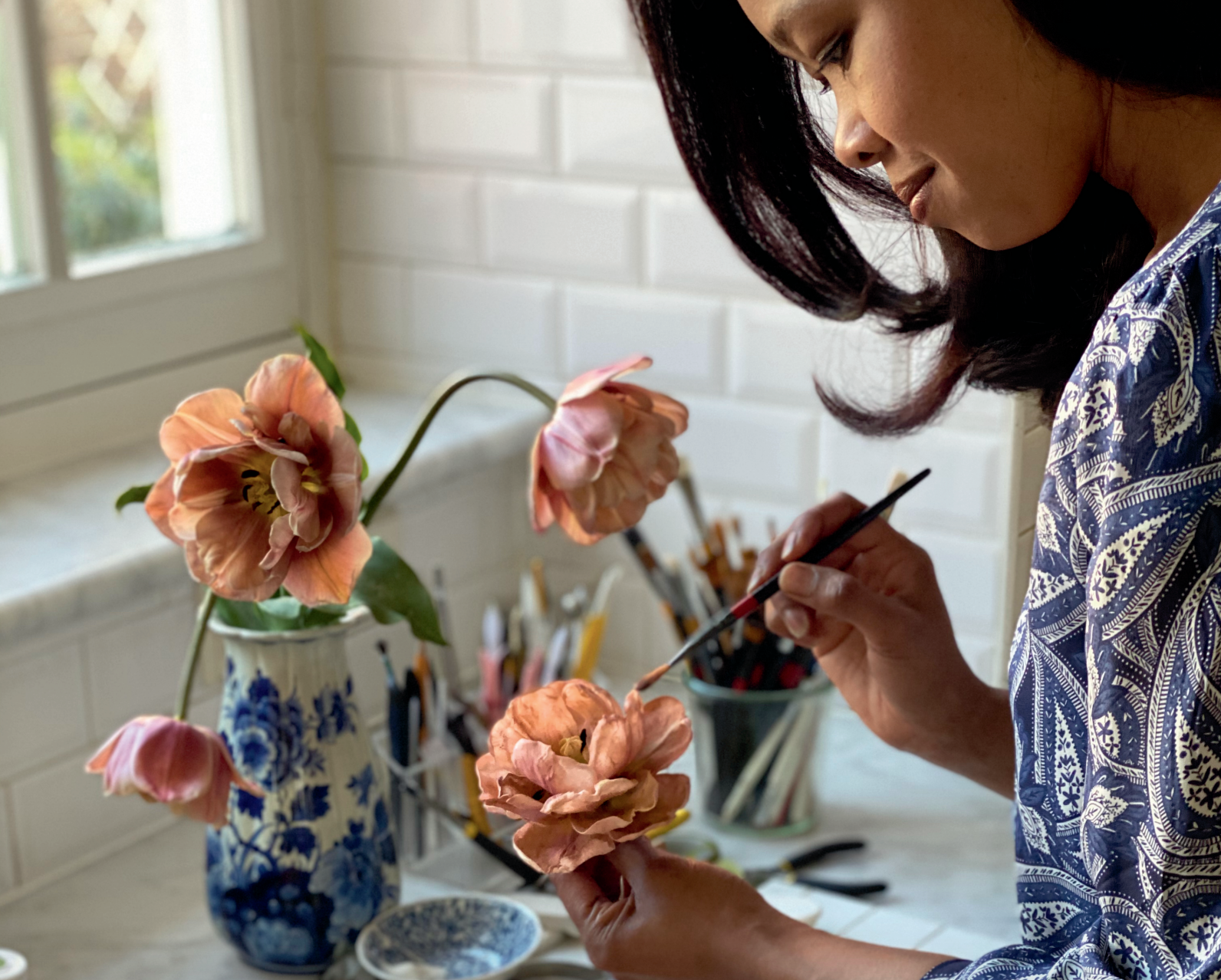
With a background in design and fashion, Amsterdam-based Natasja Sadi creates floral arrangements out of sugar. Photo by Natasja Sadi.
Can the flowers be used in an edible context?
Well, technically, if you would break off a leaf of a sugar flower, you could eat it. I say “technically” because, of course, a lot of these petals are wired, so I do not recommend eating them. But because they are made out of an edible ingredient, yes, it would be possible. But so much time goes into creating sugar flowers, so I don't really recommend consuming them. It would be such a waste [of] a wonderful keepsake. You can use them over and over and over again.
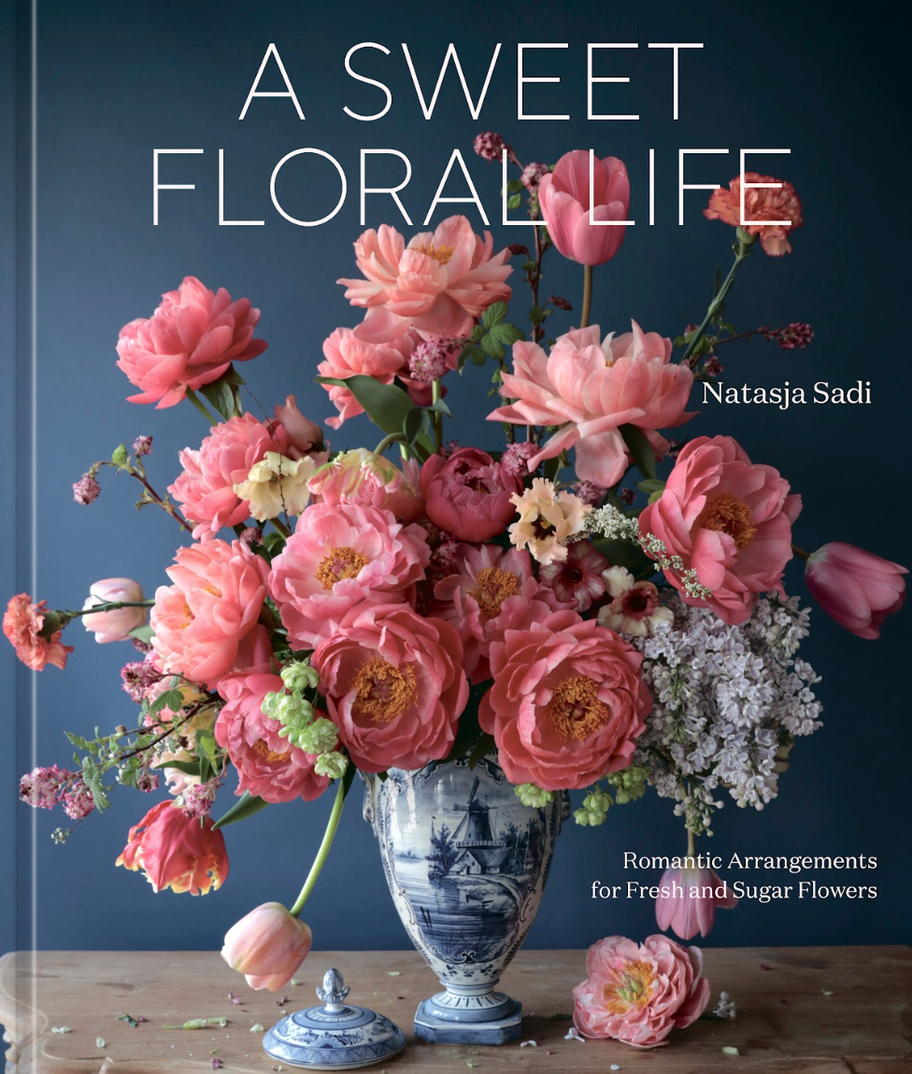
"A Sweet Floral Life" showcases the sugary creations of artist and photographer Natasja Sadi. Photo courtesy of Clarkson Potter.
How long do they last?
Forever. Absolutely forever. They are, of course, very fragile. So you have to be really careful with them, because if you drop them, then yeah, they will be gone. But sometimes if it's just a little piece that has been torn off or broken, either you could add another new petal or sometimes I keep it because I like the irregularities. It makes it even more natural.
